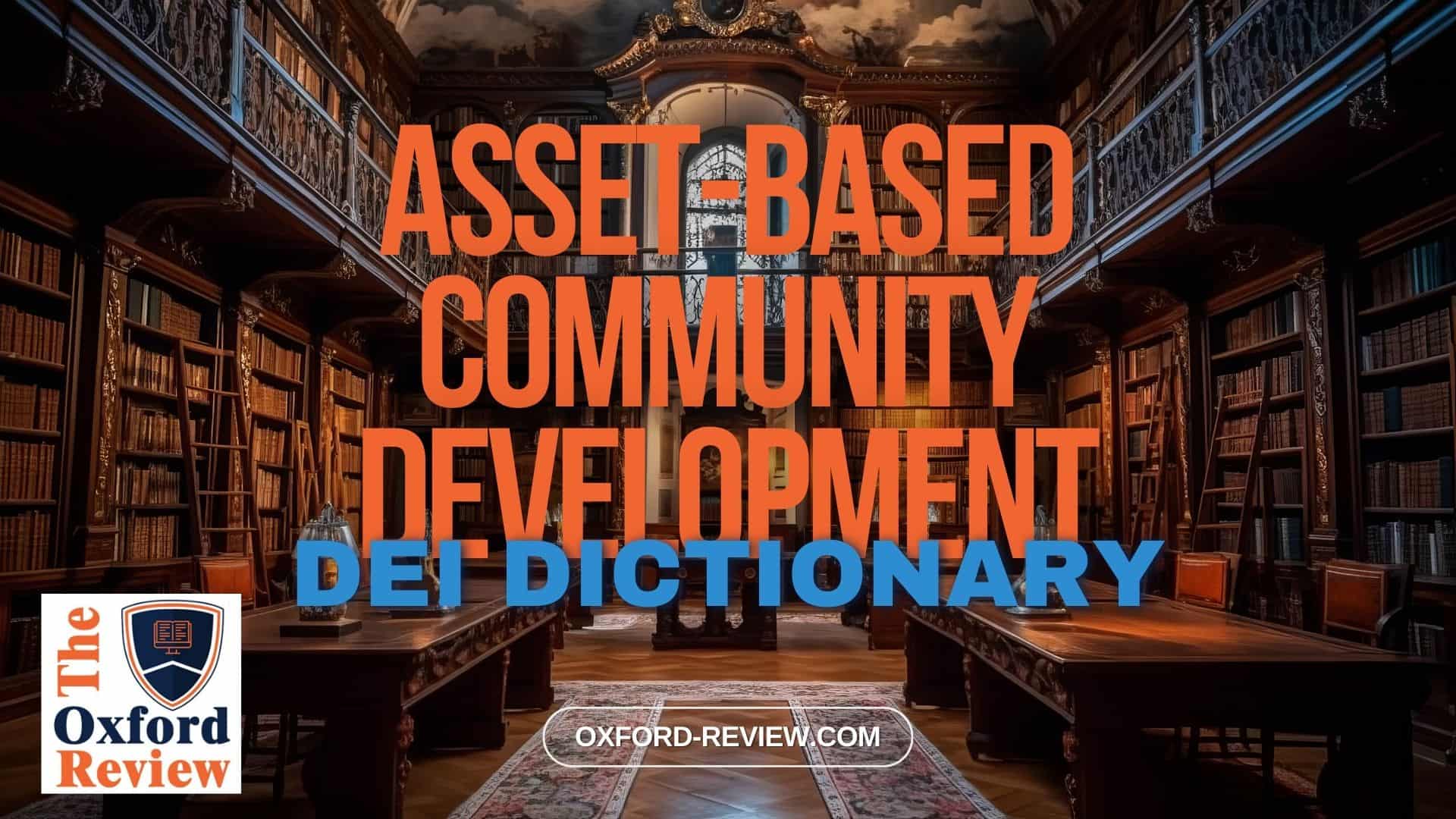Asset-Based Community Development – Definition and Explanation

Unleashing Potential: Understanding Asset-Based Community Development
Asset-Based Community Development (ABCD) stands as a potent approach that spotlights existing strengths within communities to propel positive change. Unlike deficit-based methods that highlight problems and deficiencies, ABCD places emphasis on the wealth of assets present in every community.
Definition:
Asset-Based Community Development is a grassroots strategy that empowers communities to identify and mobilise their existing assets to tackle local challenges and enhance quality of life. Rather than viewing communities through a lens of deficits, ABCD encourages recognising and utilising the talents, skills, knowledge, and resources already present within the community.
Key Principles:
- Asset Mapping: ABCD commences with asset mapping, a process of identifying and inventorying the strengths, resources, and capabilities within a community. This could include physical assets like parks and community centres, as well as human assets such as skilled individuals and community leaders.
- Strength-Based Approach: ABCD emphasises the strengths and capabilities of individuals and communities, shifting the focus from problems to possibilities. By highlighting what works well, ABCD promotes a sense of empowerment and self-reliance among community members.
- Collaborative Action: ABCD encourages collaborative efforts among community members, organisations, and institutions. By working together, communities can maximise their resources and create sustainable solutions that address their unique needs.
- Capacity Building: ABCD prioritises building the capacity of individuals and communities to lead their own development initiatives. This involves providing training, support, and resources to empower community members to take ownership of the change process.
Benefits:
- Empowerment: ABCD empowers individuals and communities to take control of their own destinies by recognising and utilising their inherent strengths.
- Sustainability: By building on existing assets, ABCD initiatives are more likely to be sustainable in the long term, as they are rooted in the strengths and resources of the community.
- Resilience: Communities that practice ABCD develop greater resilience to challenges and crises, as they are equipped with the skills and resources to adapt and respond effectively.
Example:
Consider a neighbourhood facing high unemployment rates and limited access to healthy food options. Instead of focusing solely on the problems, community members, in collaboration with local organisations and businesses, decide to implement an ABCD approach.
Through asset mapping, they identify underutilised spaces that could be transformed into community gardens and vacant storefronts that could house small-scale food enterprises. They also identify skilled individuals within the community who can provide training and mentorship.
By leveraging these assets, the community is able to create employment opportunities, increase access to fresh produce, and foster a sense of pride and ownership among residents. As a result, the neighbourhood experiences positive social and economic impacts, demonstrating the transformative power of Asset-Based Community Development.
Conclusion:
In conclusion, Asset-Based Community Development offers a promising framework for fostering inclusive and sustainable community development. By shifting the focus from deficits to assets, ABCD empowers communities to realise their full potential and create positive change from within. Through collaboration, capacity building, and a strengths-based approach, ABCD has the potential to unlock a brighter future for communities around the world.
References:
Haines, A. (2014). Asset-based community development. In An introduction to community development (pp. 67-78). Routledge. https://www.taylorfrancis.com/chapters/edit/10.4324/9780203762639-14/asset-based-community-development-anna-haines
Cunningham, G., & Mathie, A. (2002). Asset-based community development: An overview. Coady International Institute. Retrieved February, 4, 2009. https://d1wqtxts1xzle7.cloudfront.net/4149862/c2008_04_16_binder_24_-_abcd_4-libre.pdf
Harrison, R., Blickem, C., Lamb, J., Kirk, S., & Vassilev, I. (2019). Asset-based community development: narratives, practice, and conditions of possibility—a qualitative study with community practitioners. Sage Open, 9(1), 2158244018823081. https://journals.sagepub.com/doi/full/10.1177/2158244018823081
Mathie, A., & Cunningham, G. (2003). From clients to citizens: Asset-based community development as a strategy for community-driven development. Development in practice, 13(5), 474-486. https://www.tandfonline.com/doi/abs/10.1080/0961452032000125857
Be impressively well informed

Get the very latest research intelligence briefings, video research briefings, infographics and more sent direct to you as they are published
Be the most impressively well-informed and up-to-date person around...
